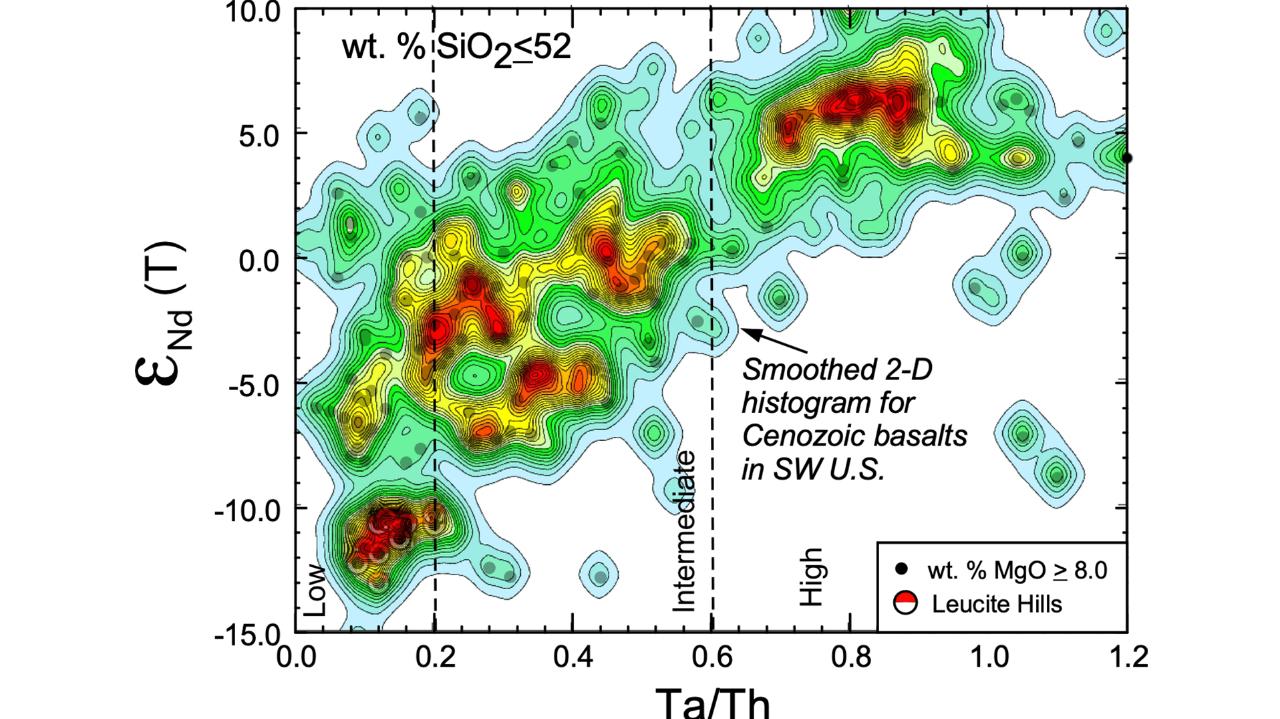Lang Farmer
Professor of Geological Sciences, Divisional Dean for Natural Sciences
- Ph.D., University of California, Los Angeles, 1983
Research Interests
My research centers on applications of trace element abundances and radiogenic isotopic data from natural materials to study the origin and evolution of Earth's lithosphere. Current projects include the use hafnium and neodymium isotope data from siliciclastic sediments to investigate the paleogeography of ancient continents and "big data" studies of space-time-compositions patterns in Cenozoic volcanic activity in western North America to assess the evolution the deep continental lithosphere beneath this region over the past 70 million years, as illustrated in below diagram.
Current Research
"Development of MicroInterdigitated Electrode Arrays as Ion Sources for TIMS", Funding from National Science Foundation
Thermal ionization mass spectrometry is the technique of choice for high precision determinations of the isotopic abundances of elements found in both natural and manufactured materials. However, the precision of isotopic measurements performed in this fashion depends on the efficiency of the techniques used in the mass spectrometer to generate ions from elements extracted from sample materials. This project involves an effort to improve the ionization efficiency of high temperature (<1,300oC) liquid glass ion emitters, a type of metal ion source that is routinely used in thermal ionization mass spectrometry but that typically only ionizes one in every ten of the metal atoms loaded into the instrument for analysis. The approach will be to increase the proportion of metal ions generated in the liquid glass using electrolysis techniques, in which the liquid glass will serve as an electrolyte when placed in contact with two metal electrodes of opposite electrical polarity (an “electrochemical cell”). The electrochemical cell consists of a micro-interdigitated electrode array (IDA) produced by sputtering tungsten onto a silicon or sapphire wafer. Preliminary studies show that our prototype IDA can induce electrochemical reactions in molten leaded glass and when placed in a thermal ionization mass spectrometry, a differential voltage across our IDA results in variation in the Pb+ "beam" that reaches the collector end of our thermal ionization mass spectrometer. These results provide a proof of concept of our approach and represent the first steps towards improving the ionization efficiency of liquid glass ion emitters.
Research Categories
Solid EarthResearch Images
to
Invalid date -Sponsors
-
Invalid dateP.I.(s)
About CECA
CECA connects and creates a supportive environment for graduate students and postdocs who come from various academic units to do research in CIRES.
